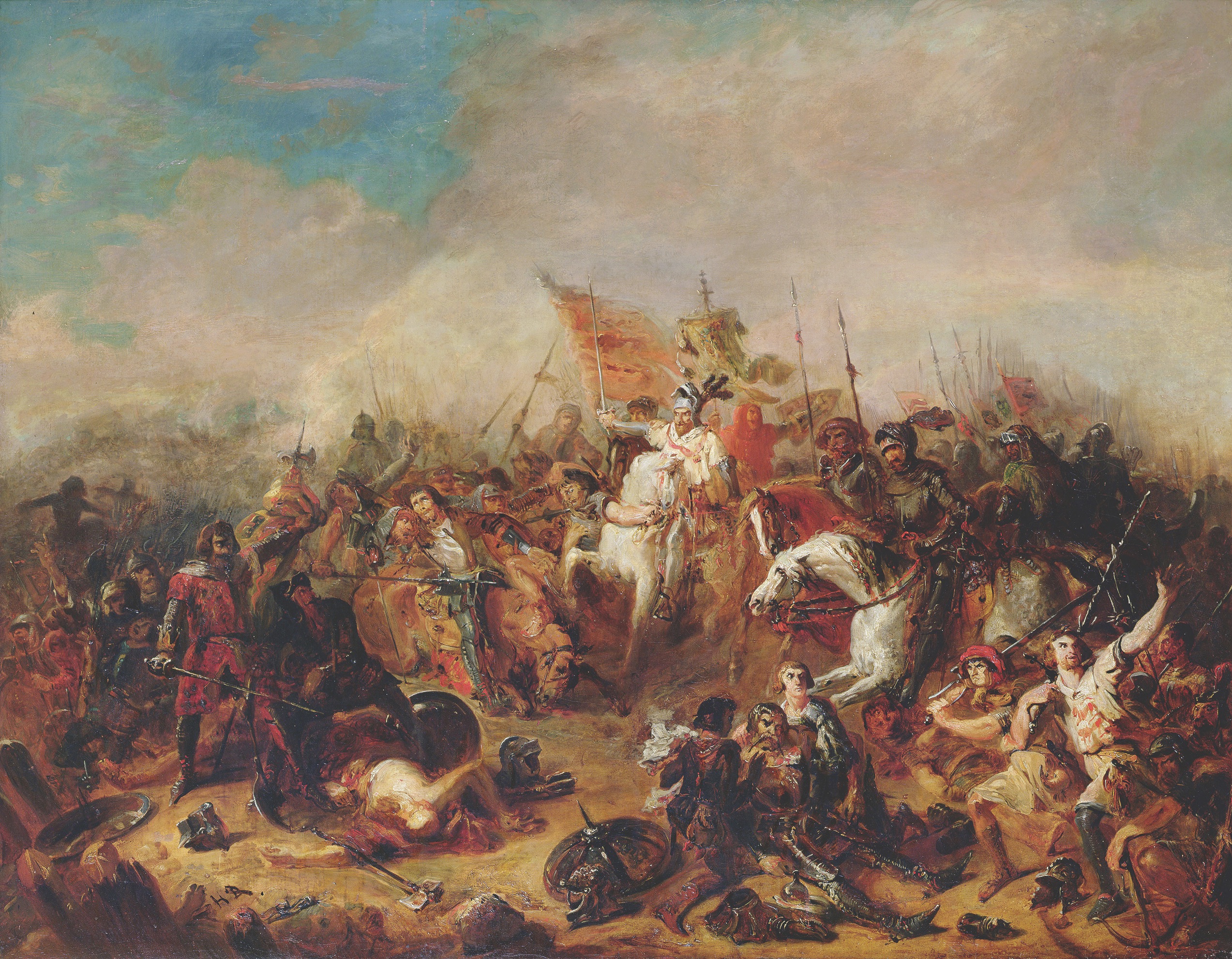When England’s King Edward the Confessor died on Jan. 5, 1066, it set off a chain of events that changed the course of European history. As Edward had left no direct heir, the Witenagemot, a council of Anglo-Saxon notables, selected his brother-in-law, Harold Godwinson, as the new king. He was crowned in London on January 6 as Harold II. But there were other powerful claimants to the English throne. Foremost among them was William, Duke of Normandy. William claimed that some 15 years earlier Edward had chosen him as his successor, while those present at Edward’s deathbed claimed the king identified Harold as his successor. Each considered the other a usurper.
Before acting, William secured support for his claim from Pope Alexander II. He also drew followers from across Western Europe, including Brittany, Flanders, Poitou, Burgundy, Aquitaine and southern Italy. His adherents were mostly nobles’ younger sons, attracted by the prospect of carving out fiefdoms in England should William prevail in battle. The unprecedented assembly foreshadowed the host of the Crusades. Over nine months William constructed an invasion fleet of more than 700 ships to transport his estimated 7,000 troops and 2,000 horses across the English Channel.
Harold, meanwhile, struggled to consolidate his power and massed an army in the south to resist William. In late September he was forced to march more than 200 miles north to Yorkshire to confront the invasion forces of Norwegian claimant Harald Hardrada. While the king’s men crushed the enemy and slew Hardrada at Stamford Bridge on September 25, they sustained heavy casualties. Three days later William’s troops landed in the south at Pevensey, the next day marching 12 miles east to Hastings, the coastal terminus of the main northern road to London. On learning of the Norman landing, Harold force-marched his exhausted men south to London. Without waiting for his strung-out column to consolidate or pausing to marshal reinforcements, the king then rushed south with his depleted force.
Meanwhile, William consolidated his army around Hastings in anticipation of Harold’s arrival. He didn’t have to wait long. On October 13 the vanguard of the king’s fragmented forces reached Caldbec Hill, 7 miles northwest of Hastings. William marched to meet it, establishing a base on Telham Hill, about a half-mile away. Harold in turn moved forward and established a strong defensive line on Senlac Hill, which would force William’s men to advance across low ground and then attack uphill. William deployed his army in three divisions, with Bretons on the left, Normans in the center, and French and other mercenaries on the right. Each division formed three lines, with archers in the first, heavily armed infantry in the second and mounted knights in the third. While both sides had roughly 7,000 to 7,500 troops, Harold’s army comprised almost entirely infantry.
William opened the battle around 9 a.m. on October 14 with volleys of arrows. Firing uphill, his archers proved less than effective and his infantry and cavalry made little progress against the shield wall of Harold’s infantry. But when the panicked Bretons fled under a hail of English missiles, Harold’s troops on the right broke ranks to pursue. Riding into the fray, William managed to regroup his men, who counterattacked. The fighting went on all day, William’s archers proving especially deadly. Around dusk Harold was killed by an arrow to the eye, and the Saxon line finally crumbled. Ten weeks later, on Christmas Day, William was crowned William I of England at London’s Westminster Abbey.
The 1066 campaign had widespread ramifications. Perhaps most important, it ended Scandinavian domination of the British Isles and locked them firmly into the orbit of Western Europe.
After the battle William’s wife, Matilda, and her ladies-in-waiting crafted an epic record of the battle in needlepoint. The 231-foot-long, 20-inch-high Bayeux Tapestry is housed in a purpose-built museum within arrow’s flight distance of Normandy’s Bayeux Cathedral.
As an act of penance William ordered an abbey built on the field of combat, its high altar perched atop the reported site where Harold was felled by an arrow. The original church no longer stands; most of the extant structures date from the 13th to 16th centuries. But a stone tablet still marks the spot where the king died. The town of Battle has grown up around the site. The terrain from Telham Hill north, over which William’s forces had to advance, remains largely open ground and would still present a challenging tactical problem to any attacker.

